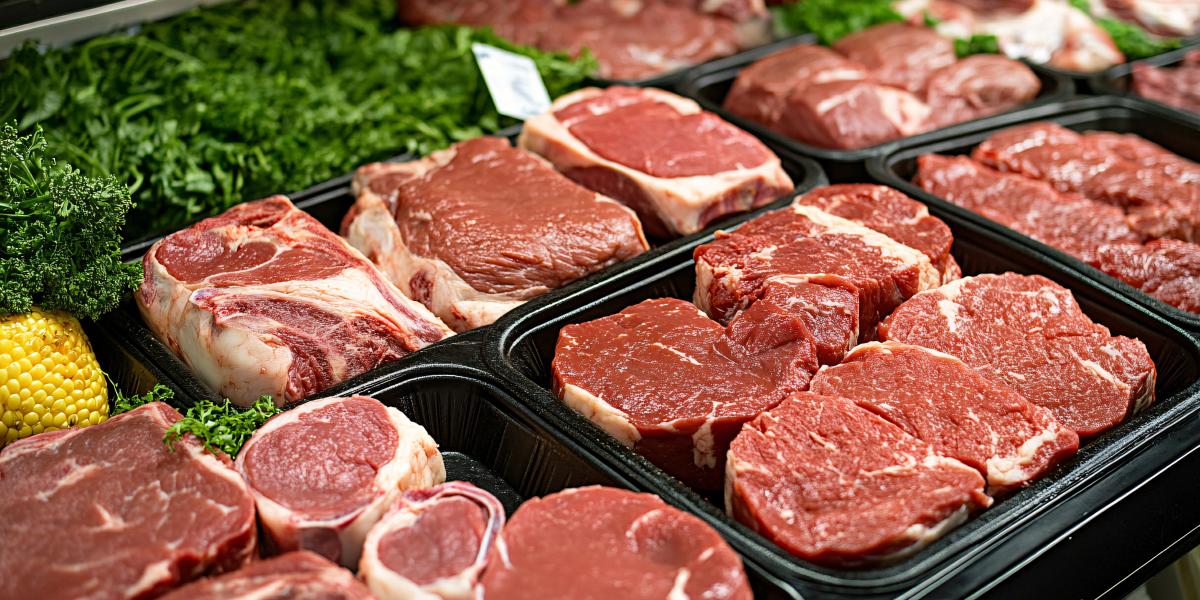Examining the Cost of Beef
The price of beef in the United States has skyrocketed in recent years, reaching near-record highs and significantly impacting household budgets. This surge, far exceeding historical averages, reflects broader inflationary pressures exacerbated by government policies, particularly the massive spending and money creation during the COVID-19 pandemic. While not solely responsible, these actions contributed heavily to the rising costs faced by cattle producers, including inflated prices for feed grains. Although grain prices have somewhat receded, the damage to herd sizes has already been inflicted, contributing to the ongoing supply constraints and elevated beef prices. This creates a challenging environment for both consumers and various stakeholders in the beef supply chain, from processors to wholesalers, all grappling with the volatile and competitive nature of the industry.
The Federal Reserve’s long-standing policy of suppressing interest rates has further fueled the inflationary fire, particularly in the real estate market. Artificially low interest rates inflate land prices, diverting land potential from cattle production to other uses. This scarcity of affordable land, coupled with the high cost of feed grains, constrains the expansion of cattle ranching and intensifies pressure on beef prices. While efficient production methods exist, the economic realities of limited land availability and expensive feed create a challenging and costly production environment. This is further compounded by environmental regulations, often driven by ideologically motivated agendas, which restrict industry growth and contribute to higher consumer prices.
The confluence of these factors paints a bleak picture for the American consumer. Declining real incomes, eroded by inflation, force families to make difficult choices, often foregoing beef or opting for cheaper cuts or alternative protein sources. This reduced demand, coupled with declining beef production, creates a vicious cycle, further driving up prices and limiting access to this important source of nutrition. The cumulative effect of these trends is a decline in per capita beef consumption, potentially impacting long-term health outcomes given beef’s nutritional value, especially its high-quality protein content. This decline in consumption, driven by affordability concerns, contradicts misleading government campaigns promoting alternatives to beef, which have ironically coincided with record levels of diabetes and obesity.
The situation is further complicated by global events, such as the conflict in Ukraine, which, while not the primary driver of grain price increases, contributed to market volatility. Although grain prices have subsequently stabilized, the initial surge placed immense pressure on cattle ranchers and further contributed to reduced herd sizes. The beef industry faces a complex interplay of factors, including inflationary pressures, rising land costs, expensive feed grains, and regulatory burdens, all culminating in higher prices for consumers. This situation is exacerbated by declining real incomes, forcing families to make difficult dietary choices and potentially impacting their long-term nutritional intake.
Reversing this trend requires a multifaceted approach. A return to sound monetary policy, potentially including a gold standard or at least limitations on the Federal Reserve’s ability to manipulate interest rates and the money supply, would stabilize markets and foster more predictable investment environments. Deregulation, specifically loosening environmental restrictions and opening up land for cattle production, could alleviate land scarcity and boost domestic beef production. Simultaneously, dismantling programs like the ethanol mandate, which diverts corn from food to fuel, would increase the availability of feed grains and lower production costs for cattle ranchers. These measures would not only increase the supply of beef but also reduce its cost, making it more accessible to consumers.
Furthermore, fostering peace and stability in regions like Ukraine and the Middle East would contribute to greater global food security, indirectly benefiting American consumers by stabilizing global food prices. Increased oil and gas production would not only create jobs but also reduce the cost of fertilizer, a crucial input for agriculture, further lowering food prices and boosting overall economic activity. These combined actions would bolster real incomes, enabling families to afford beef more readily, and incentivize increased beef production, ultimately restoring a more affordable and accessible supply of this crucial dietary staple. The result would be a healthier, more prosperous population enjoying the benefits of a more stable and affordable food supply.
Share this content:












Post Comment